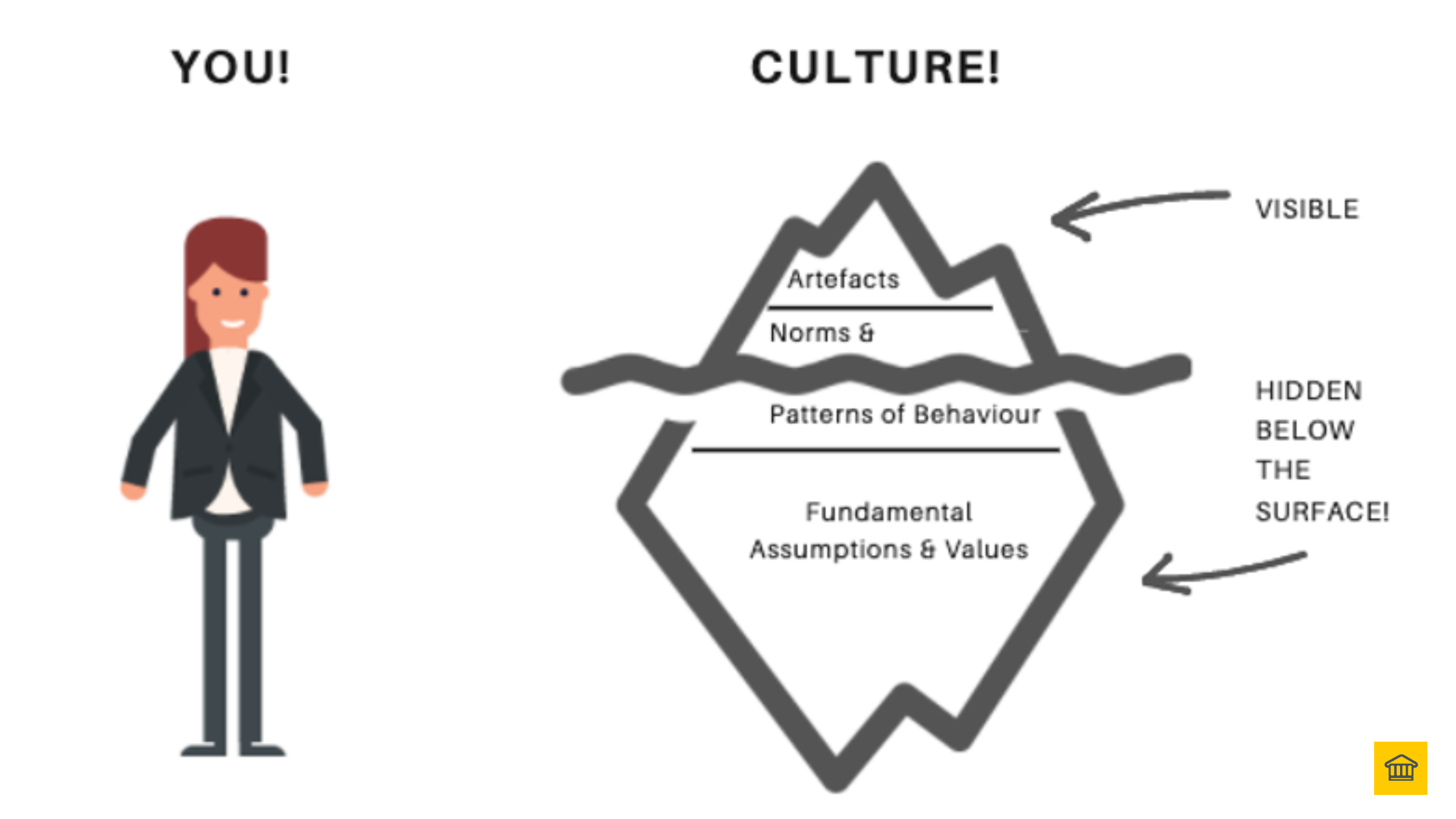Welcome to our blog post, ‘The Culture Pyramid: What You Don’t See is Killing Your Transformation’. In this post, we delve into the concept of the Culture Pyramid and its significance in business transformation. We highlight the importance of both visible and invisible elements of organizational culture and their impact on the transformation process.
We explore the three levels of the Culture Pyramid, namely the Visible Level, the Invisible Level, and the Action Layer. We discuss how each level plays a crucial role in shaping the organizational culture and its impact on business transformation.
Here is a brief overview of what you can expect in this blog post:
If you’re reading this, you’re probably thinking about transforming your business, or getting better at it. You may have already started and are now thinking ‘why is it not going any smoother or faster?’ Then this post is for you.
You’ve looked at what you’ve done, so far. It looks like you’ve done all the right things – you’ve followed the guidance; you’ve got your Senior Leadership Team on board; you’ve communicated the need and sense of urgency why you need to change, and you’ve even hired in some expert consultants, but the more money and bodies you throw at it, it doesn’t go any faster.
Well, if that’s you, the problem isn’t your approach (not yet anyway, we wrote about this in another post), it’s “what you don’t see that is killing your transformation” and that is your Culture.
When transforming your business, the often unforeseen is what gets you stuck. In this post we’re going to discuss the issues about culture and your transformation to help you get unstuck.
So, first the basics, what is Organisation culture.
What is Organisational Culture?
To put it in simple words, organisational culture defines the way people behave within the organisation. It is how people communicate, how they think, and what they act upon. These are the collective values and practices carried out, performed and are accepted or ‘acceptable behaviour’ in the organisation.
Since industries and organisations are all different, their cultures are also different. But what is interesting amongst successful companies – is the existence of a strong, positive culture that encourages everyone to play their part.

6-Steps to Business Transformation Success
WHAT THE TOP 30% OF ORGANISATIONS KNOW THAT YOU DON’T 👉

👏 "Organizational culture shapes behavior, communication, and decisions within a company. Understanding and reshaping this culture is crucial for successful business transformation. It's about uncovering the unseen forces that either propel or hinder progress. 🌐✨ #OrganizationalCulture #BusinessTransformation"
Heath Gascoigne Tweet
What is the Culture Pyramid and how does it help?
OK, so now you know what Culture is, how to do you assess it to get a better understanding of it, to know what levers to pull to get the results you want? That tool is the Culture Pyramid.
The Culture Pyramid – best represented by an iceberg for two (2) reasons -the majority of the object is hidden below the surface, and its bigger than you!
The Culture Pyramid helps break down Culture into two main parts – the Visible (what is seen and observed), and Invisible (hidden below the surface, but very much still exists).
The Visible Level
The Visible level provides the first impression to an ‘outsider’ ‘How an organisation works?’. The Visible level includes those areas of the culture that can be easily seen and explained. These are often the company’s values and “artefacts”. Artefacts are the visible part of the Culture that an ‘outsider’ to the Organisation can visually and physically see.
Artifacts can be seen the design of the space the Organisation occupies, the office space and interior design, as well as the uniform or manner of staff dress, including the language, words or terminology that employees use and are expected to know and use in their normal course of business. These physical and observable ‘artefacts’ are a good clue to the type of culture the organisation has e.g. relaxed, open, rigid, formal, bureaucratic etc.
The next level is Values.
These are the ‘norms and (expected) patterns of behaviour’ thatinclude common practices and behaviours that are seen regularly within the organisation. This includes both business practices like formal (or informal) meetings, as well as wellbeing and activities like free lunches in the canteen, or company parties that demonstrate what the company ‘values’.
Why ‘dress code’ is important is because it shows the ‘level of formality’. A more relaxed dress code is typical of an easy-going organisation, while a strict dress code more typical a more disciplined one. That’s something to consider with your Business Transformation – ‘do they really care if push-comes-to-shove’, or would it be ‘yeah-nah’ – if it works, it works, if it doesn’t, it doesn’t?
Looking to transform your Organisation with less stress & less time? Search no more!

- Introductory Offer
- Huge Savings. On Sale Now!
👏 "The Culture Pyramid - best represented by an iceberg for two (2) reasons -the majority of the object is hidden below the surface, and its bigger than you! The Culture Pyramid helps break down Culture into two main parts – the Visible (what is seen and observed), and Invisible (hidden below the surface, but very much still exists)" 🌐✨ #OrganizationalCulture #BusinessTransformation"
Heath Gascoigne Tweet
The Invisible Level
This is the one that causes all the ‘trouble’. The ‘what you can’t see might kill you – your Business Transformation’ that is.
The invisible level comprises of those parts that are not easily seen but have a big role in shaping the organisational culture. These are the parts that Edgar Schein who’s original work in the 1980s on Organisation Culture and the culture pyramid was based on, is the driver of the observable patterns of behaviour – are the underlying fundamental assumptions, core values and beliefs that form the basis of the organisation culture.
For example, a core value of an organisation could be keeping the customers a priority at all times. The organisation then establishes a working environment that makes sure this value is met at all times, such as carrying out regular customer surveys to get feedback on the level of service provided to identify areas to improve that level of service.
An example of a fundamental assumption held by the organisation could be loyalty and honesty. Even though this might not be actually said out loud, all the employees would know (i.e. assume) that type of behaviour is expected of them, and that no sort of dishonesty would be expected nor tolerated.
The problem arises when there is a gap– a gap between ‘what you do’ and ‘what you say’. In terms of Values – this is called ‘Espoused Values” versus ‘Enacted Values’.
What that means is – “espoused” is the ‘this is what we would like to do’ e.g. look after the environment, but “enacted” is what actually happens in reality e.g. ‘everyone orders their lunch delivered by Mac Trucks every day. One for each person (clearly not an environmentally friendly practice, and against the ‘company’s values’).
The difference between ‘espoused values’ vs ‘enacted values’ is it creates confusion in the minds of staff, and distrust. They are told one thing, but as an Organisation it does the other. Over time, this lack of trust if unchecked will cause waste, idle time, and eventually lead to poor business performance.
But why is it necessary to be aware of this when it comes to your business transformation?
As you can see, there are different levels within an Organisation’s culture, and they have a cause-and-effect relationship between ‘what people think’ and ‘how they behave’, and what are you trying to do with the Organisation when changing it? You are trying to influence first – what they think and then how they behave, in a ‘new’ way (i.e. transformed way) in the future, and if you don’t understand what drives that behaviour, you don’t know what levers to push.
Here’s a guide on the do’s and don’ts of a successful transformation that might come in handy.

Toolkit
Guide To Transforming Your Clients Organisation with Less Effort, Less Time, Less Cost and Increased Profilts
👏 "The problem arises when there is a gap- a gap between ‘what you do’ and ‘what you say’. In terms of Values – this is called ‘Espoused Values” versus ‘Enacted Values’. What that means is – “espoused” is the ‘this is what we would like to do’ e.g. look after the environment, but “enacted” is what actually happens in reality." 🌐✨ #OrganizationalCulture #BusinessTransformation"
Heath Gascoigne Tweet
How to Incorporate Organisational Culture in Business Transformations
When looking to transform your business, you first need to understand whether your organisation has a culture that will accept it.
In the case of a ‘weak’ organisation culture – the first step to your business transformation will be influencing your culture. If your organisation is run on a culture that is not open to change, leaves its employees unhappy and its customers dissatisfied, then your business transformation will fail even before it begins!
You might want to have a look at this short business transformation guide I have created with practical lessons.
As a starting point, you want to make sure you understand the cultural dynamics at play if you want your business or digital transformation to run smoothly, and this means paying attention to the invisible level of organisational culture.
If the employees see that a certain business transformation will help them achieve the organisation’s core values with greater efficiency, they will be more open to change. If, however, the business transformation will make them feel like they are moving away from the culture they are used to, they will not accept it.
You should use the visible level of the Culture Pyramid to guide the levers you should push and pull with your business transformation process. If the organisational culture highlights the importance of communication, then senior management need to make sure that prioritise and execute communication accurately and often, that is “enacted” not “espoused”. This could be a challenge for some that are used to giving lip-service, but not following through.
Also, you need to make sure that everyone is able to communicate freely and share ideas. The more collaborative is your culture, the more easily the transformation will happen. If the business transformation is introduced as a ‘side-project’ or ‘under-handed’ because Senior Management don’t want to ‘upset staff’, that is exactly what will happen.
I personally watched this twice when a client was trying to outsource a line of business, that wasn’t communicated, the staff it was affecting found out about the programme and posted a notice on the notice board “what is Project XYZ?” the notice said. Whispers started circulating, Unions got involved and the project eventually came to a grinding halt.
Organisational culture has the power to make or break a company’s business transformation. A positive organisational culture will welcome a business transformation, whereas a weak one will never allow it to happen.
Practical Steps You Can Take
So, in order to have Staff welcome your business transformation in the right, positive light, make sure your Senior Management do the first thing right. Communication. With understanding the company’s culture in terms of the Culture Pyramid and understanding the cause-and-effect relationship from the ‘hidden’ (below the surface) to the ‘visible’ – all areas that the Senior Management themselves would have had a hand in creating, and enforcing, need to craft that communication.
This communication to All staff needs to address Staff concerns, and aspirations, but also how it is aligned with the cultures assumptions and values. And where it is changing or challenging those norms and behaviours, explicitly state how and why and what the process will look like as they go through the Business Transformation, and of course, what the Vision (the final) outcome looks like at the end.
People are risk-adverse by nature, as a group of people – unless ‘culturally’ they are ‘risk-accepting’ (or adrenaline junkies), you have to sit all the employees down and explain to them the process step-by-step, so it is easier for them to understand – like culture, ‘visually’.
For example, where processes are being automated (also known as Business Automation) you need to explain how and why. If you are going completely paperless ensure them how they boring manual tasks they hate are now being replaced with more creative tasks.

👏 "In the case of a ‘weak’ organisation culture - the first step to your business transformation will be influencing your culture. If your organisation is run on a culture that is not open to change, leaves its employees unhappy and its customers dissatisfied, then your business transformation will fail even before it begins!" 🏛️🔄 #CulturePyramid #BusinessTransformation #AlignmentMatters"
Heath Gascoigne Tweet
Conclusion
Remember, the business transformation should be introduced step by step – especially if your employees have shown some resistance. Start with one department and move onto the next.
Massive software or system implementations never happen in ‘one-big-bang’, well not the successful ones anyway. Many lessons have been learned that that old school approach doesn’t work, and same with your business transformation. Massive ‘big-bang’ transformations don’t work. They need to be piece-meal.
As smaller transformations are executed and realised, the projects and programs will reach (and celebrate) small wins, and this creates momentum. As momentum builds and the transformation gradually spreads into all parts of the organisation, the culture will start adopting and embracing the new ways of working (if the above steps are followed!).
If you’re having trouble understanding these steps, I have an easy framework and blueprint that you can effortlessly follow to make it happen.
Looking for a fail-safe way out? Check out our 6-Week Agile Transformation Accelerator course using our method that is trusted by the UK Government to setup and turnaround their business transformations.
We hope you found tremendous value in it. Thank you for reading!
Let me know what you think in the comments, and what you would like to see next. Thank you for reading this!
Sincerely,

Heath Gascoigne
P.S. If you want to join our Business Transformator community of 2,000+ like-minded Business Transformators, join the community on the Business Transformator Facebook Group here.
P.P.S. If you want to learn more about business transformation, check out The Business Transformation Playbook here.
For more information, visit https://www.hoba.tech

6-Steps to Business Transformation Success
WHAT THE TOP 30% OF ORGANISATIONS KNOW THAT YOU DON’T 👉













